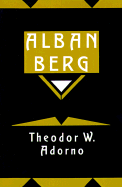Tone
Published online by Cambridge University Press: 03 May 2011
Summary
Familiar from childhood is the last movement of Haydn's “Farewell” Symphony, that F # minor piece in which one instrument after another ceases to play and departs, until finally only two violins remain to extinguish the light. Above and beyond the work's innocuous motivation and that sphere which repellant familiarity equates with Papa Haydn's sense of humor is the intent to compose farewell, to fashion the vanishing of music and to realize a potential that for those who penetrate its mystery has ever lurked in the very evanescence of musical material. Looking back on the works of Alban Berg, who, if alive today, would be over eighty years old, it seems as though his entire oeuvre was directed toward surpassing Haydn's flash of inspiration, toward reshaping music itself into a metaphor of vanishing, and with music to say adieu to life. Complicity with death, an urbane cordiality toward his own extinction, are characteristics of his work. Only those who understand Alban Berg's music as a product of these characteristics, and not as a matter of historical style, can truly experience it. One of his most mature and perfect compositions, the Lyric Suite for string quartet, closes without closing, open-ended, without a final barline and with only a major third motive in the viola, which according to the composer's directive may be repeated ad libitum several times until becoming quite inaudible.
- Type
- Chapter
- Information
- Alban BergMaster of the Smallest Link, pp. 1 - 8Publisher: Cambridge University PressPrint publication year: 1991



